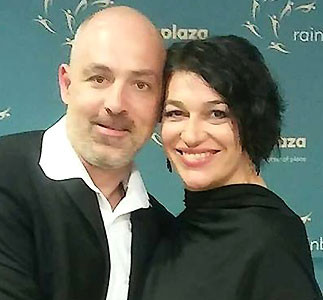
Wine has been part of the culture and life of Bulgarians since time immemorial. It was put on the table of the ruler and his entourage; drinking wine was regarded as a ritual that would bring them closer to the divine. Once Christianity spread in the world, and was adopted in this country, wine continued to be a symbol – now of the blood of Jesus Christ. Gradually wine entered the homes of ordinary people and they too started growing different grape varieties.
Two of the most well-known and widely grown grape varieties in Bulgaria are Gumza and Mavrud. Their names are attributed to legends, which, though impossible to prove true are nonetheless beautiful. One of them goes like this:
 “At the time of the Second Bulgarian Kingdom there lived a Bulgarian boyar who had two daughters – Gumza and Mavruda – these were beautiful traditionally proto-Bulgarian names. His winemakers decided to name two grape varieties after the newborn girls. In much more modern times – the mid-20th century – the two varieties of grapes – Gumza and Mavrud – made their way from the region of Vidin, where they originated, to the region of Assenovgrad. In recent years these grape varieties have been making a return in Vidin and the region,” says sommelier Hristo Toshkov.
“At the time of the Second Bulgarian Kingdom there lived a Bulgarian boyar who had two daughters – Gumza and Mavruda – these were beautiful traditionally proto-Bulgarian names. His winemakers decided to name two grape varieties after the newborn girls. In much more modern times – the mid-20th century – the two varieties of grapes – Gumza and Mavrud – made their way from the region of Vidin, where they originated, to the region of Assenovgrad. In recent years these grape varieties have been making a return in Vidin and the region,” says sommelier Hristo Toshkov.
Another legend goes that there once lived a poor woman who fed her only son on grape juice form her small vineyard. As time went by, the boy grew up to be strong and smart. His strength astounded anyone who saw him, especially after he overpowered the lion Khan Krum had placed at the gates of the first Bulgarian capital Pliska. So, the variety of grapes which had given the boy such strength was named after him – Mavrud.
 In our day, Mavrud and Gumza are the varieties Bulgarians love best, their density and aroma making them particularly well suited to the meat dishes Bulgarians traditionally prefer in winter. Yet to be absolutely certain the bottle you are buying is all you would want it to be, it is best to consult a sommelier.
In our day, Mavrud and Gumza are the varieties Bulgarians love best, their density and aroma making them particularly well suited to the meat dishes Bulgarians traditionally prefer in winter. Yet to be absolutely certain the bottle you are buying is all you would want it to be, it is best to consult a sommelier.
“A sommelier is a wine consultant not a wine technician who gives his opinion on the production of wine,” explains Hristo Toshkov. “The word was in use as far back as the Middle Ages. That was what the people were called who would go from town to town with their mules to sell wine from their own vineyards to inns and taverns. The best translation of the word sommelier would be “the man with the mule”. The role of the well-trained sommelier is to recommend what wine should be drunk with what kind of food.”
To be accepted to the sommelier community you need to have a special relationship with wine. That is not easily attained, it takes much patience and the perception of wine as a detail contributing to the festive spirit of the occasion. A true sommelier will tell you story behind the label, making the drinking of a glass of wine a special occasion, a ritual, just as it was in ancient times.
When you are selecting a bottle of wine, it should be just one element of the gift. Frequently the occasion calls for a more refined gift that conveys a message. Wine can be such a gift too, as long as it is elegantly arranged. Whether it will be in a special box, or in a painted bottle, or with hand-decorated glasses is a matter of choice. If you are giving wine to someone living abroad, and if that someone is fond of Bulgarian tradition, it might be a good idea to get them a bottle with some kind of folk ornaments.

“It is interesting to see Bulgarian embroidery and the symbols it conveys presented in a more modern way,” says artist Vessela Vulchinova-Toshkova. “Embroidery is the medium that is reminiscent of folklore most, and it is easy to put on a bottle of wine, interpreted in modern colours and combinations.”
English: Milena Daynova
Photos: Gallery for wine and art "Ey+infinity" and archiveFebruary 16, 2025 marks the 127th anniversary of the first bulletin of the Bulgarian Telegraph Agency, signed by its first director Oscar Iskander. The agency was established in 1898 by a decree of Prince Ferdinand I. Just like 127 years ago, today the..
The first Dalmatian Pelican of this season hatched a few days ago in the protected area Kalimok - Brushlen near the Danube town of Tutrakan, reports the Bulgarian Society for the Protection of Birds "BirdLife Bulgaria". The parents are taking active..
More than 4,000 participants from 52 masquerade groups from all over the country will take part in the Jamala National Masquerade Festival in Kyustendil on 15 and 16 February. A children's folklore procession will start from Velbazhd Square at 10.30 a.m...
Exactly a month after the Bulgarian National Radio solemnly celebrated its 90th anniversary, history continues its dialogue with us, its authors. With a..

+359 2 9336 661
